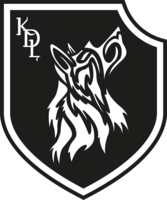At 5 weeks, weaning begins, and the mother seeks less contact with her pups, making nursing difficult by frequently changing positions or moving away, and through agonistic and punishing behaviors when the pups try to approach the teats. The father could assist in preventing the pups from following their mother. These behaviors may induce detachment but also help impose respect and social dominance of older individuals. At 5 weeks, the young can follow adults for over a kilometer from the den.
At 8-10 weeks, adults move the pups to initial rendezvous sites. Weaning is complete, and the pups can feed on food provided by adults. Adult fur becomes apparent. Eye color gradually changes from blue to golden yellow between eight and sixteen weeks.
After weaning, significant behavioral changes occur, termed as acquiring independence, resulting in increased social interactions and improved food-seeking skills, still regulated by the mother.
Rendezvous sites are usually located near water points and open areas with disordered vegetation due to wolf visitation. They occupy a restricted area, usually less than 4000 m², with frequent feces, footprints, and trails. Rendezvous sites, like den sites, exist in various habitats.
In non-forest northern habitats, prey kill sites may also be used as rendezvous sites for pups, likely to gradually involve the young in hunting activities.
- At 12 weeks, the young begin to accompany adults during short hunting periods and return to rendezvous sites on their own.
- At 3.5 months, a rapid growth period starts (14-27 weeks), during which the young gain 600-700 grams per week for about three months.
- At 4-6 months, milk teeth are replaced by permanent teeth, and winter fur starts to appear.
- At 6 months, the young accompany adults on hunts, learning to recognize tracks, prey, and territorial limits. Their appearance is almost similar to adults’.
- At 7 months, a slow growth period begins (27-51 weeks). Young females gain about 30 grams per week. The young start moving with the pack, and the use of rendezvous sites decreases.
- At 8 months, they begin hunting actively.
- At one year, their skeletal growth is complete.
- At 22 months (on average), they reach sexual maturity.
Artificial intelligence translation of an original text by Sandrine Devienne.
Click here to read the French version

